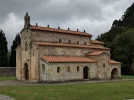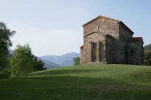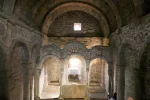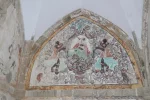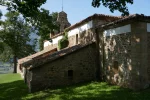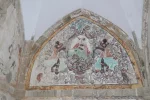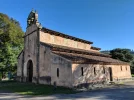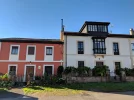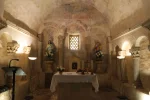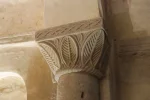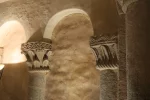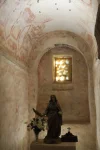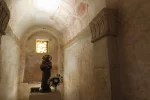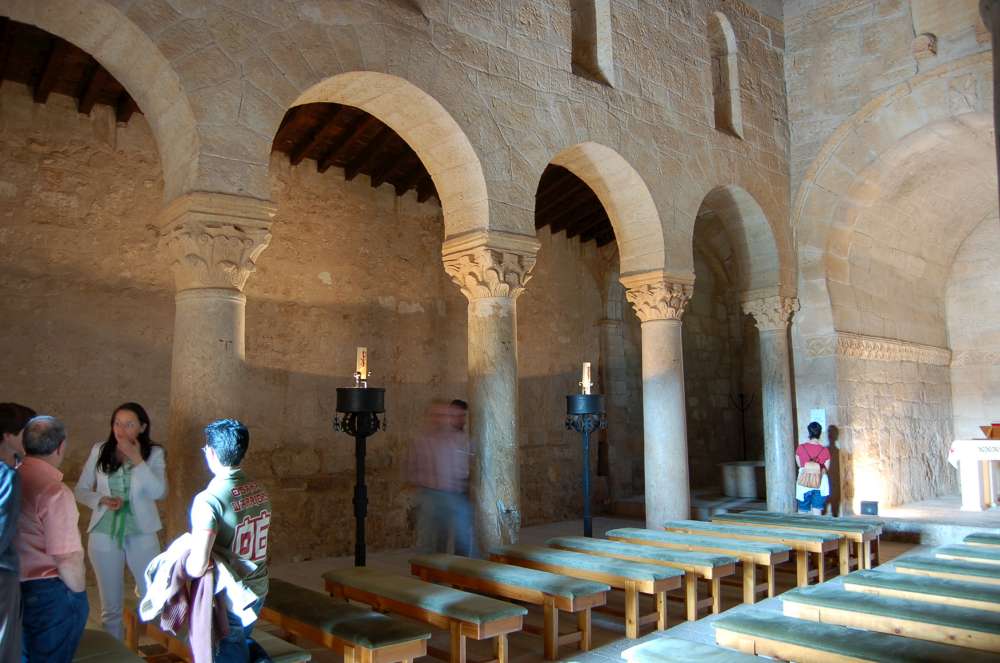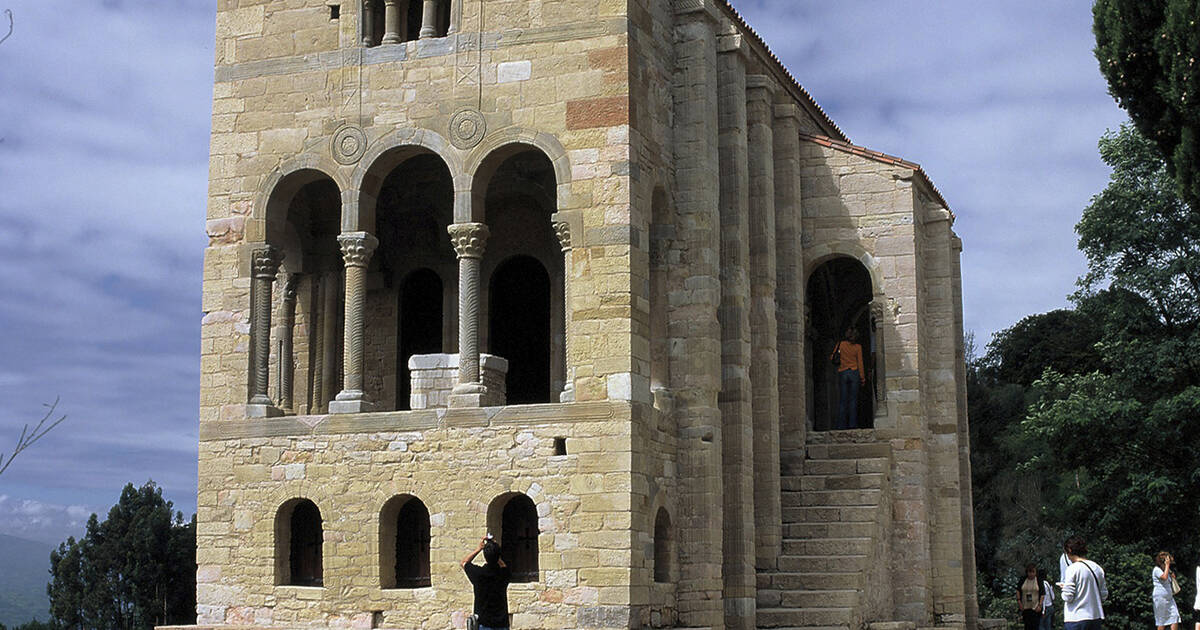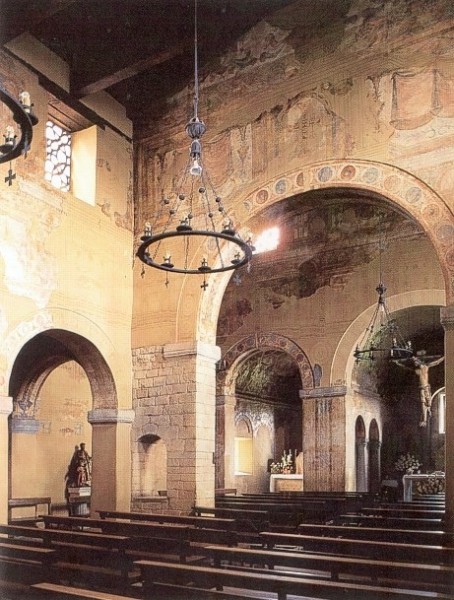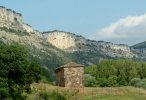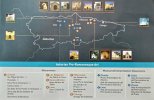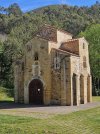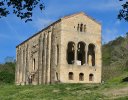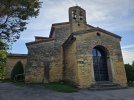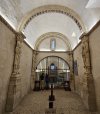Asking that question is like waving a red flag in front of a bull.

I have walked to most, and have visited a couple of the off-camino ones by car. IMHO, there is nothing like sitting inside one of these beautiful, irregularly shaped ancient works of love and devotion to get the reflective juices flowing — not that I think great thoughts, but it is such a peaceful place to think about the meaning of it all.
Primitivo — I have never thought of it this way, but in terms of ancient churches, I guess the Primitivo wins hands down. And if you walk into Oviedo from the Norte to start the Primitivo, you can add Valdediós to your itinerary, and it is truly one of the most beautiful. It is a well marked slight off-camino walk from Villaviciosa and on the way to Pola de Siero. So totally worth it.
For me personally, if I were pressed for time in Oviedo, the Naranco sites are far more beautiful (though much more heavily touristed) than San Julián de los Prados. It is the biggest, but its size makes it less human, and less peaceful, I think.
The last time I walked the Primitivo, I thought about trying to find my way to
San Pedro de Nora, but in the end didn’t.
Vdlp — Santa Lucía de Trampal is gorgeous. @alansykes‘s
detour GPS in between Aljucén and Alcuéscar is all you need. It’s in a beautiful rural setting, so you can enjoy the outside from many angles. The inside has been re-done and there is a visitors’ center with many informational panels, but the church retains the essential simplicity.
Salvador — Santa Cristina de Lena is about 200 m off the Camino after Campomanes, and I cannot imagine how anyone walking the Salvador could bear to miss it. And the environs are incredibly pastoral and peaceful.
Vadiniense (or Francés)— OMG, San Miguel de la Escalada. From Gradefes to Mansilla de las Mulas on the Vadiniense, you pass right by. But it is only about 15 km from Mansilla de las Mulas, and it would be worth moving heaven and earth to get there. In fact, this was how I met Rebekah. Way back years ago, I posted on the forum about wanting to visit San Miguel from León and wondering about transportation. Reb answered that she would pick me up and take me there! She even brought a copy of the beautiful Beatus that was produced there for me to look at. Totally totally worth it. I visited it again on the Vadiniense.
Santa Comba de Bande — I don’t think this is near any camino (at least not any that I know of), but I once spent a glorious weekend in Galicia in that area and took the short drive from Celanova (a very pretty Galician town) to visit the
church. And ruins of a
Roman fort along the way. Celanova has its own monuments to visit, too!
Thank you so much for the heads up. I think this is probably one of those places where you have to find the señora with the keys. But I would call ahead of time.
Teléfonos de Información: Guías, Nuria 620 923 644. Ayuntamiento de Tricio 941 36 10 57.
So, just to sum it all up with my opinions — of all of these, if you are looking for quiet, contemplative spots, where you will be overwhelmed by the humbling simplicity, I would recommend Valdediós and Santa Cristina de Lena as my “top two.”



